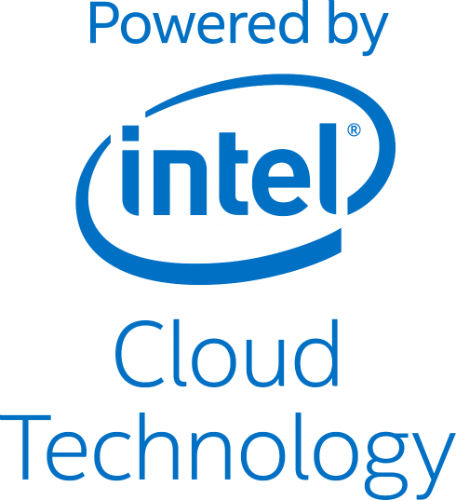Hybrid cloud has helped pave the way for the next paradigm in enterprise ICT – Hybrid IT.
Thus far, organizations have leveraged the power of hybrid cloud to enjoy incremental benefits such as increased cost efficiencies, agility (bring your own cloud), elasticity, DRaaS, and increased availability than what any singular type of cloud alone could offer.
But the complexities and expectations of modern businesses have continued to grow. This has resulted in a dire need for their dynamic and constantly evolving business functions, processes and workflows to be supported by various infrastructure configurations, platforms and clouds that are deployed across multiple architecture stacks and geographic locations. At the same time, they face the dilemma of maintaining and operating both legacy and cloud native applications.
The resulting over-arching goal then is to simplify the complexity and to automate the lifecycle management of the underlying hybrid, multi-clouds, to provide an application lifecycle platform which abstracts the complexity of the underlying infrastructure stack so as to offer a standardized and globally consistent suite of IaaS and PaaS that offer true agility and scalability.
This has given rise to a IaaS/PaaS catalogue with pre-validated server, OS templates and system packages, enabling end-users to put up applications with ease and agility so they can focus on their core job responsibilities - and not waste time installing and configuring servers and their associated systems. This is where hybrid IT – the next logical step in cloud evolution - comes into play.
So, what is Hybrid IT?
Hybrid IT is an approach to enterprise ICT and cloud computing whereby an organization manages and consumes IT resources seamlessly across a wide spectrum of solution and delivery options, from direct access to physical servers, to virtualization and containers for increased portability; from hosting on-premises and managed in-house, to cloud-based, on-demand XaaS.
Put simply, Hybrid IT helps organizations virtualize and automate the deployment of multiple applications and services across all aspects of IT, liberating them from the geographical or capacity constraints of the underlying infrastructure that powers them.
By providing the secure interconnectivity between clouds and making it easy to move workloads across clouds, hybrid cloud has essentially enabled Hybrid IT. What this means in practice is that Hybrid IT ‘rides’ on hybrid cloud, so that the full spectrum of both traditional and digital applications and their associated workloads, ranging from ERP, CRM, legacy business applications to devops, social media, enterprise mobility, big data, IOT, etc, can now be hosted and delivered from a borderless cloud for increased agility and flexibility, so that the workloads are able to move freely across multiple clouds and data centres, where internal and external IT services are all linked together.
Hybrid cloud vs Hybrid IT
With Hybrid cloud, we were concerned about how to manage it as if it were a single enterprise cloud. With Hybrid IT, the landscape has evolved further. It is now about crossing the next chasm and being able to easily deploy, tear down and re-deploy IT applications on-demand and on any underlying infrastructure or cloud service, which will be presented as a single, standardized suite of infrastructure services.
With Hybrid IT, it is not just about managing different server templates, different hypervisors, different operating systems or different server types, it is also about how you manage the data plane. Your focus shifts from the installation of IT systems and applications to the management of the data contained in the systems and applications. This frees you to dynamically set up and use various applications to work with your data, without being restricted by the availability of a certain profile of virtual machine, or its performance, or whether the data and systems are available locally – in other words, without needing to care about the underlying IT infrastructure.
An example as to how this focus on the management of the data has impacted organizations can be found in corporate disaster recovery (DR) strategy. Organizations used to back up their data using a standardized, homogenous solution, where both the target site and the backup site are of similar configuration – which can not only be quite costly but also restrictive. Today, however, organizations back up their data to a combination of on-premises, private cloud and public cloud based on the value of the data and its frequency of change. This shows how organizations can benefit from a hybrid IT strategy, by focusing on what really matters and not being limited by the availability of a specific type of compute, storage, hypervisors, containers, etc in particular geographical regions.
Towards Digital Transformation
Hybrid cloud is effectively becoming a subset of Hybrid IT. The increasing demands of today’s hybrid workloads (i.e. traditional vs cloud-era workloads) requires us to go beyond automating the provisioning and management of infrastructure solutions and clouds (multi-clouds), to providing best of breed IT applications that run on a catalogue-based, standardized infrastructure.
By being able to dynamically and seamlessly deploy the entire portfolio of IT applications and tools regardless of the actual underlying infrastructure or geographical constraints, Hybrid IT is able to unlock the real value of IT for organizations. It enables them to manage both the deterministic, traditional IT workloads and the bursty, hyper-scaled cloud-era workloads in a fast evolving and fragmented IT landscape, providing them with true flexibility and mobility to run their business applications anywhere, anytime. This, in a very practical way, is what will truly enable and accelerate digital transformation.
The journey to Hybrid IT starts with hybrid cloud, and is a big part of the bigger journey of digital transformation. Working with a partner, like Orange Business, who understands this journey, who can architect and deliver on a hybrid cloud solution appropriate for your organization based on Intel technologies that use the same type of hardware and security feature than the local enterprise cloud, is the first step in helping you maximize the possibilities and benefits of Hybrid IT.
- - -

To find out more about why underlying infrastructure powering your Cloud services matters, impacts your applications performance and operating costs, please watch: Intel Cloud Technology
If you would like to know more about how processor technologies can accelerate your workloads to save you time and money, please watch: Improving Cloud Performance with Intel Cloud Technology
